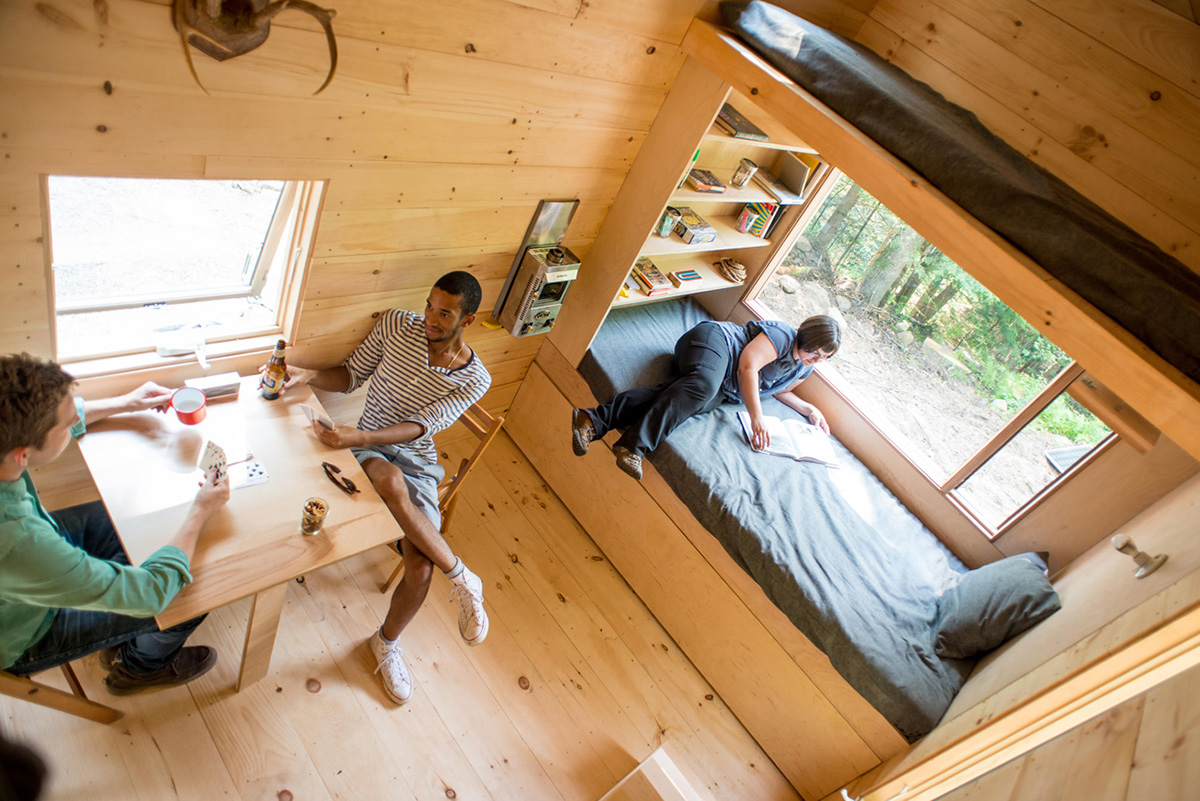Submitted by WA Contents
GSD duo designs “tiny houses” for cross-Harvard startup
United States Architecture News - Aug 10, 2015 - 16:15 4010 views

image: inside Getaway's first tiny house Ovida, courtesy of Kataram Studios
Harvard-based startup Getaway is tapping into the “tiny house movement,” and a Harvard Graduate School of Design pair is embracing the creative challenges of designing Getaway’s star attraction: so-called “tiny houses” available for vacation rental.
Getaway was cofounded by Harvard Business School student Jon Staff and Harvard Law School student Pete Davis via the Millennial Housing Lab—which, in turn, took root in the Harvard Innovation Lab. Getaway’s basic plan is to build tiny houses, then situate them on rural plots and rent them by the night. With the July launch of its first house, named Ovida, Getaway has attracted an array of media attention in recent weeks.
Wyatt Komarin (MArch ’16) and Rachel Moranis (MArch ’15) are collaborating with Staff and Davis to design Getaway’s houses, starting with the eight-by-twenty-foot Ovida, named in honor of a team member’s grandmother. Komarin and Moranis are joined by designer Addison Godine, a friend whom Komarin met while the two were undergraduates at Middlebury College.
Tiny houses are much what they sound like: small-scale, often mobile houses that measure under 400 square feet, but that are similar in design to a typical family home. They have recently become a national fascination, popularized by shows on HGTV and viral news stories about couples selling their possessions and casting themselves into the minimalist tiny-house lifestyle.
Getaway’s team members aim to bridge the divide between the broad cultural interest in tiny houses and the experience of actually living in one. Rather than miniaturize the design elements of a more standard house, Komarin and Moranis work at a small scale from the first stages of the process. With this approach, says Komarin, “the wholeness of the concept can be felt throughout the scheme, rather than appearing as a mish-mash of shrunken-down architecture.”
“I find the challenges of designing at a small scale to be very fulfilling,” Komarin adds. “We've got to pack a lot of program into a 160-square-foot footprint.”
Soon after Ovida’s completion, the team drove it to a rural spot in southern New Hampshire, about two hours north of Boston, where guests can rent it for overnight visits. The cabin sleeps up to four people and starts at $99 a night, bookable online—and for the coming months, Ovida is booking-up quickly. Getaway is launching a second house, named Lorraine, in mid-August and currently has a third in the works. Staff and Davis hope that, if people check out a tiny house for a weekend, they might consider one of their own, or at least enjoy the lifestyle one offers.
“For the tiny-house community, this is a way to test-drive tiny-house living, and for the urban public generally, this is a wonderful way to get away from the digital grind,” Davis says. “Addison, Wyatt, and Rachel’s design captured these two ideas wonderfully.”
“By building small, you're able to use high-quality materials and you can invest in every inch of the space,” Staff recently told Fast Company’s Co.Design. “And people notice that. Everything is wood and metal—real materials, no composites, nothing fake. Tiny houses make you more introspective about how you live.”
To learn more about Getaway, Millennial Housing Lab, and their upcoming and ongoing projects, visit their website.
> via gsd.harvard.edu